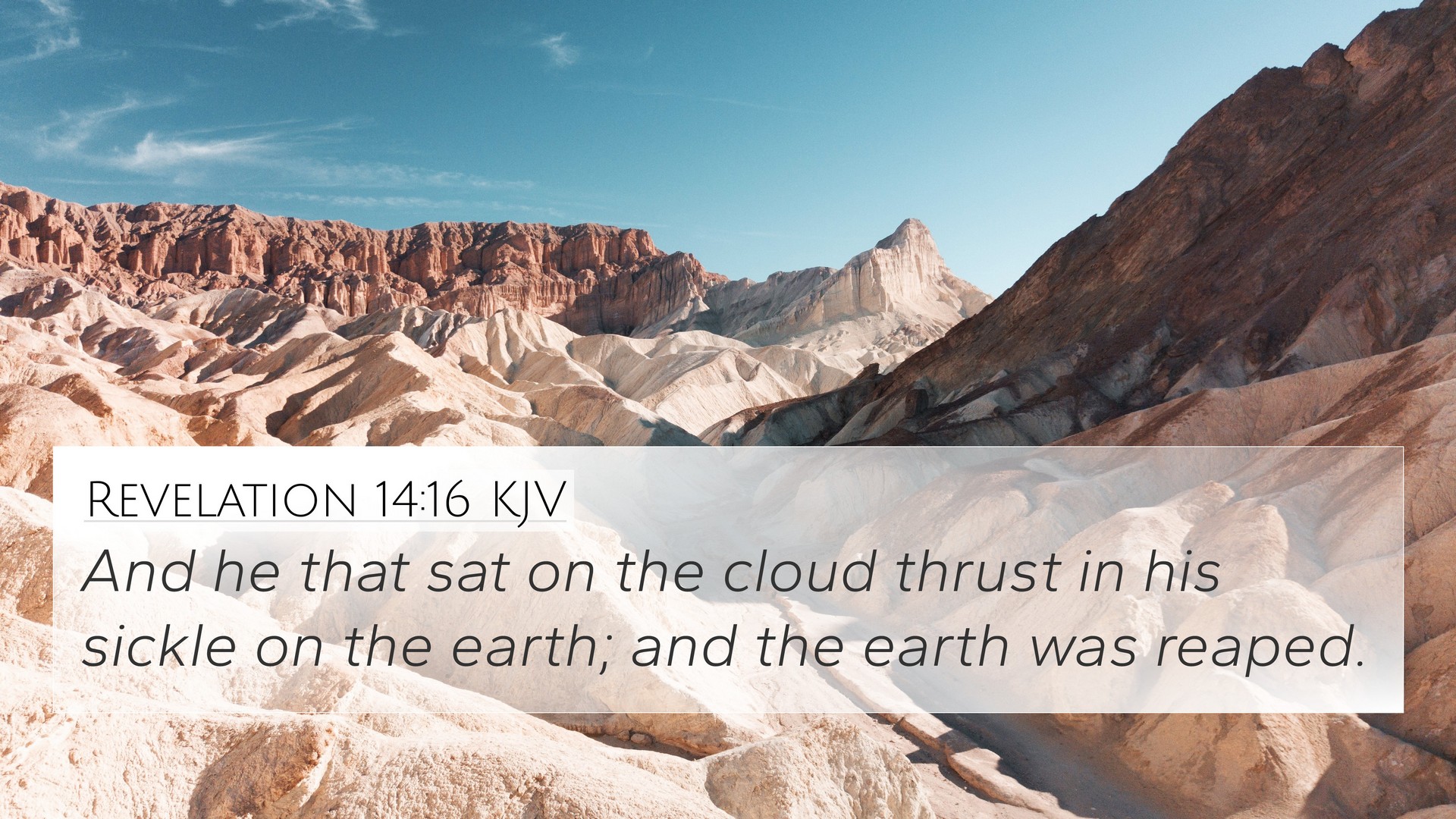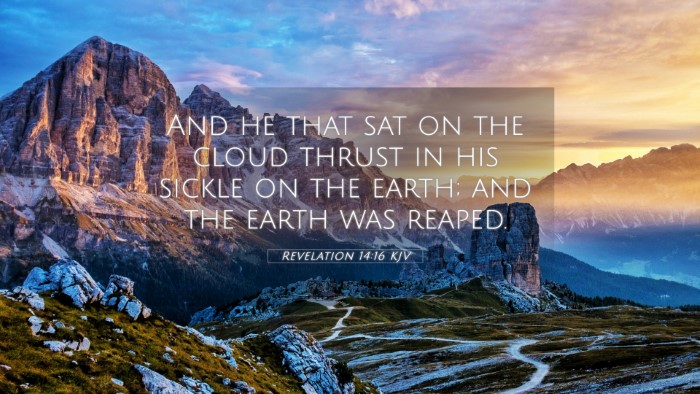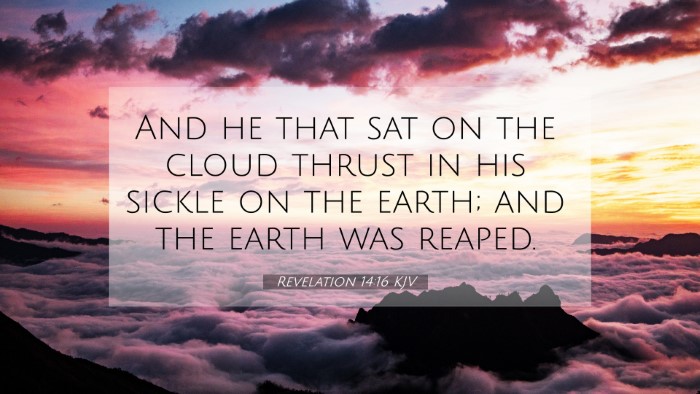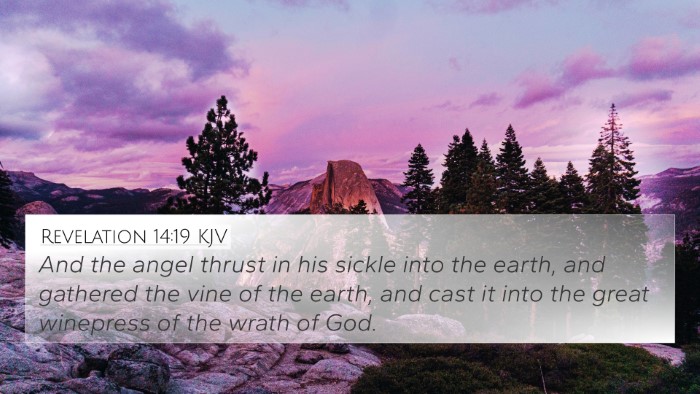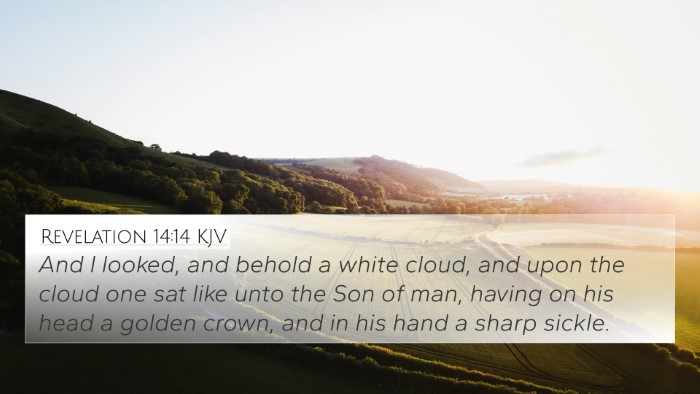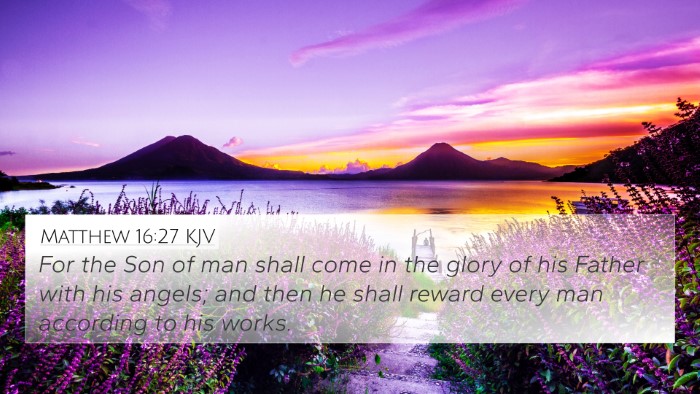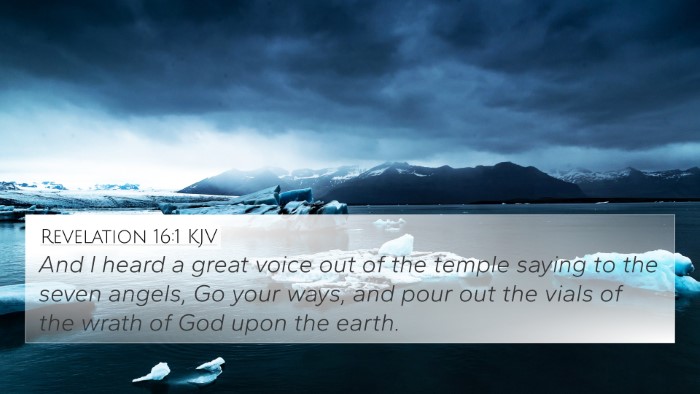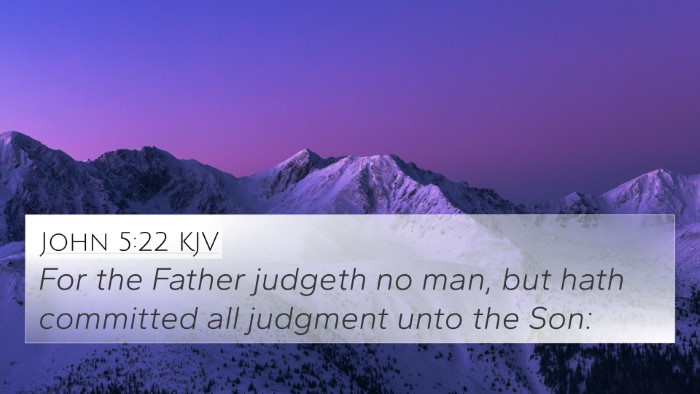Understanding Revelation 14:16
Revelation 14:16 states, "And he that sat on the cloud thrust in his sickle on the earth; and the earth was reaped." This verse captures a powerful and vivid scene in the heavenly vision provided to John, the author of Revelation.
Meaning and Interpretation
The act of reaping signifies the culmination of God's judgment and harvest of souls, contrasting the topics of grace and judgment that pervade the Scriptures.
Insights from Commentators
- Matthew Henry: He interprets the verse as depicting Christ's authority over the final judgment, indicating that the reaping signifies the final gathering of the harvest of souls, where believers are separated from the wicked.
- Albert Barnes: Barnes emphasizes the symbolism of the sickle, representing the divine tool used for the harvest, which echoes other scriptural references to judgment and divine retribution.
- Adam Clarke: Clarke notes that the cloud signifies the majesty of Christ, reinforcing the idea of kingship and sovereignty in the judgment process; he also links this verse to the themes of eternity and the final state of humanity.
Cross-References and Connections
The thematic connections to other scripture passages enrich the understanding of Revelation 14:16. Here are several pertinent cross-references:
- Matthew 13:30: "Let both grow together until the harvest: and in the time of harvest I will say to the reapers, Gather ye together first the tares, and bind them in bundles to burn them: but gather the wheat into my barn." This passage outlines the concept of a future harvest and the separation of good from evil.
- Joel 3:13: "Put ye in the sickle, for the harvest is ripe: come, get you down; for the press is full, the fats overflow; for their wickedness is great." Joel's prophecy highlights the collection of judgment against the nations.
- Revelation 14:15: This verse directly precedes our focus verse, mentioning the imminent harvest of the earth as divinely commanded, emphasizing readiness for judgment.
- 1 Thessalonians 4:16: "For the Lord himself shall descend from heaven with a shout, with the voice of the archangel, and with the trump of God: and the dead in Christ shall rise first." This illustrates the gathering aspect present in Revelation.
- John 4:35: "Say not ye, There are yet four months, and then cometh harvest? behold, I say unto you, Lift up your eyes, and look on the fields; for they are white already to harvest." This ties in the urgency of the harvest theme found in both testaments.
- Glory of Heaven - Matthew 13:43: "Then shall the righteous shine forth as the sun in the kingdom of their Father. Who hath ears to hear, let him hear." Here, the reward for the righteous upon the harvest points to eternal glory.
- Luke 3:17: "Whose fan is in his hand, and he will thoroughly purge his floor, and will gather the wheat into his garner; but the chaff he will burn with fire unquenchable." John the Baptist's proclamation reflects the dual response to God's judgment.
Thematic Importance
Revelation 14:16 is laden with significance. It serves as a potent reminder of God’s sovereignty and the reality of divine judgment, prevalent themes in scripture.
This verse and the act of reaping connect deeply with the doctrines of salvation and judgment woven throughout the biblical narrative, illustrating how God interacts with humanity and how humanity must respond.
Tools for Understanding Cross-References
For those studying scripture, various resources can be effective:
- Bible Concordance: Helps locate verses and their connections.
- Cross-Reference Bible Study: Engaging in a cross-referencing study can illuminate the interrelatedness of scripture.
- Comprehensive Bible Cross-Reference Materials: Offering lists of themes and their passages.
- Bible Reference Resources: Such as commentaries and study guides that explain passages in depth.
Conclusion
The poignant imagery of Revelation 14:16 invites readers to consider the broader implications of divine judgment and the hope offered within the context of redemption. By exploring relevant cross-references and engaging with trusted commentaries, believers can enrich their understanding of this profound biblical text.
